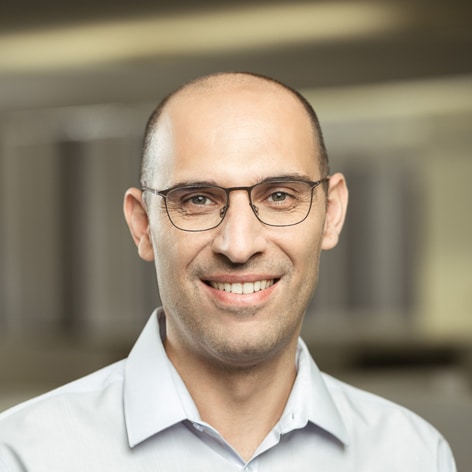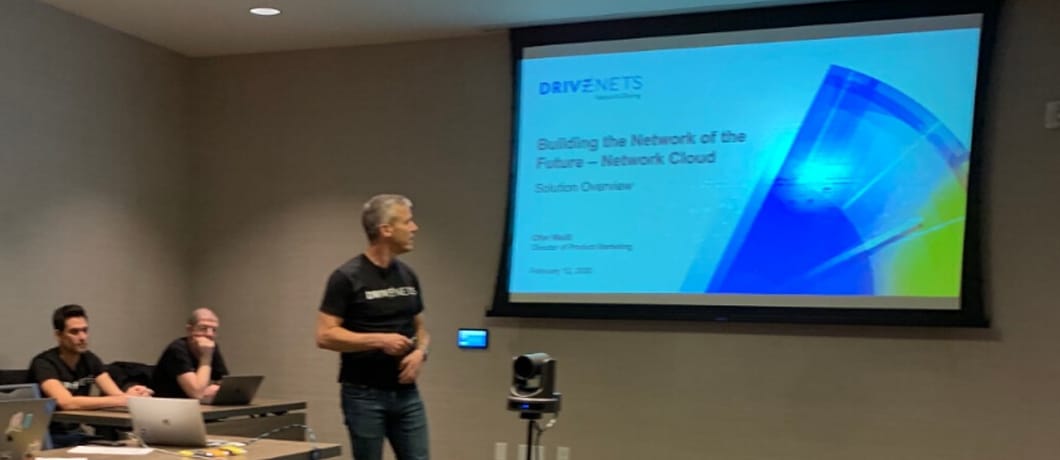In my overview session I followed Simon Sinek’s famous guidelines in which he says that when you present your company, you should start with the “Why” before you get into the “What” and the “How”.
Why Service Providers are looking to change their network.
DriveNets was established to change the way networks are built and operated and build a network with four main goals:
- Software-based – as everything today is software based…
- High scale – to support the largest networks in the world (we sell to the Service Providers..)
- Open architecture – it must be open to give your customers the option to choose
- Simple to operate – we know from experience that you must think about operation simplicity from day one as it is very hard to add it after the product is out
It’s a known fact that Service Provider’s networks today are too complex and have been stagnant for decades. Service Providers (SP) run a dedicated physical network for each type of service (broadband, enterprise, and mobile), with dozens of different routers, each serving a different network function and running a different software version… an operational nightmare. As a result, SPs desperately want to change their network. A recent survey conducted by Heavy Reading indicates that most SPs are planning to or are thinking of making a radical change to their network architecture in order to reduce costs while scaling the network and simplifying its operation. The survey also reveals that what SPs are looking for is a software-based solution that promotes the disaggregation of hardware and software.
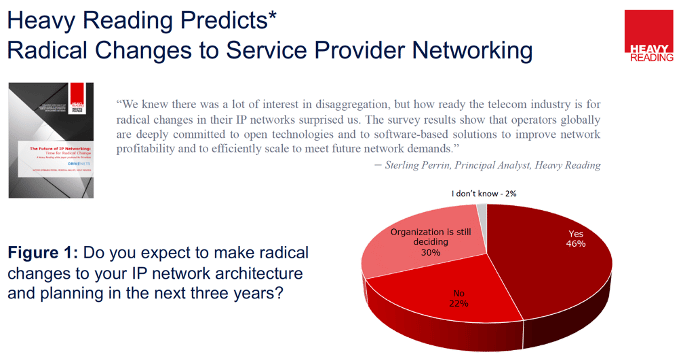
Drivenets Build networks like clouds
When looking for a new network architecture that is software-based, high-scale, open, and simple to operate we found that the hyperscalers have already solved the scaling challenge for data centers by radically changing their architecture. They disaggregated the software from the hardware and introduced a virtualization layer that allows multiple applications to share the hardware resources and consume them only when needed. With hardware resources being utilized more efficiently and by disaggregating the software from the hardware, high-end servers could be replaced with many low-cost white boxes.
To solve the scaling and complexity challenges of the SPs’ network, DriveNets has adapted the hyperscalers’ model to the service-provider networks and applied three levels of disaggregation:
- The disaggregation of hardware and software gives the SPs the flexibility to choose the hardware and software vendors separately and prevent vendor lock-in
- Cloud-native software using virtualization and containerized microservices for building a distributed operational system
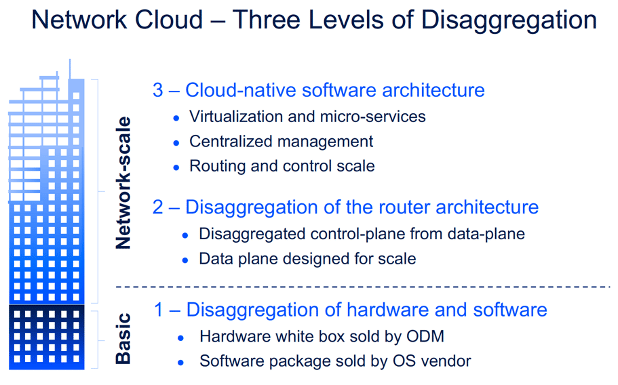
Open, Distributed and Disaggregated Arcitechture
In Network Cloud, we disaggregated the control and data-planes. The control-plane runs on x86 servers and the data-plane is implemented with a cluster of white boxes so they scale independently. The data-plane is built from just two building blocks: Network Cloud Packet Forwarder (NCP) and Network Cloud Fabric (NCF), and it scales from a single standalone solution to a large cluster made of dozens of white boxes operating as a single routing entity. To ensure open architecture, DriveNets’ Network Cloud solution is the first to support AT&T’s Distributed Disaggregated Chassis (DDC) architecture, submitted to the Open Compute Project (OCP).

DriveNets’ distributed cloud-native software uses containers and microservices over a virtualization layer to better utilize the shared hardware. The routing protocols have been redesigned to meet the large scale demands of the disaggregated router. And yet the multiple disaggregated hardware and software components are managed centrally as a single routing entity to provide SPs with the operational simplicity they crave.
Routing Protocols for large scale demands simplifes Network Operations
So how does it simplify network operations? We bring a single disaggregated router which can scale from a 4Tb standalone solution to a 768Tb large cluster. For the first time the Service Provider can use the same two building blocks to form clusters at any scale, and can support any location in the SP’s network: from the access network, to the aggregation network, and up to the edge and even the largest core networks of the world. And these building blocks are low-cost white boxes that the SP buys directly from the ODM he chooses.
From the software perspective, a single software package serves the different functions across the entire network with the same software package, differing only by the services they run. The use of containers allows us to run the different services and also new third party services on the same cluster, sharing the hardware infrastructure.
Now, although the disaggregated router can comprise dozens of separate white boxes, the Network Cloud router is still simple to operate using the cloud-native orchestration system, DNOR. DNOR enables full life cycle management and transforms the lifeless disparate white boxes into a single routing entity with zero-touch provisioning.
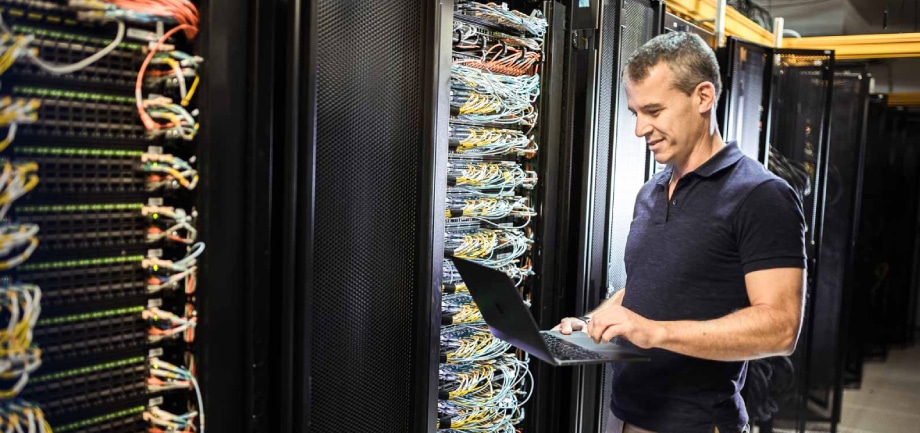
New Economic Model For Building Networks like Clouds
DriveNets did not stop there, creating a new economic model as well. Typically, expenses grow with capacity growth as SPs must buy new equipment to meet increasing capacity demands. However, with DriveNets’ fixed software license, SPs can scale by adding more white boxes at a cost+ model directly from the ODMs as needed, while still paying the same fixed price for the software license, thus reducing the network’s cost. At DriveNets, we say that we’ve decoupled the network cost from the network growth.

It’s time to change the way networks are built and operated.
DriveNets was founded to change the way networks are built and operated. Our Network Cloud solution is a cloud-native software-based solution, that is:
- Software-based with a distributed NOS, virtualization, and microservices
- High scale solution that scales from a single standalone white box to a large cluster, supporting every network function
- Open architecture based on OCP Distributed Disaggregated Chassis (DDC)
- Operational simplicity through using the same hardware building blocks and the same software package across the entire network and by using DriveNets cloud-native orchestrator with zero-touch provisioning
For more than 30 years networks have been built and operated in the same way. It’s time for change. It’s time for Network Cloud.



